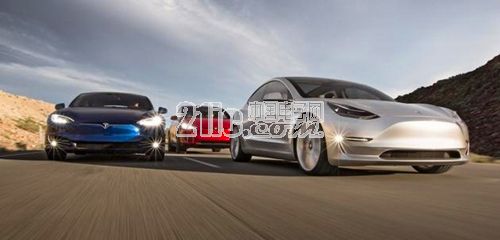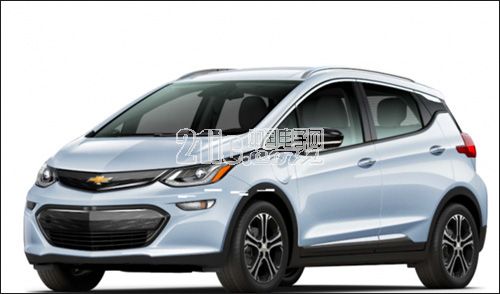"The next 12 months will be crucial for Tesla," said analyst Karl Brauer. With the Model 3 and a range of affordable electric vehicles, the company is pushing to bring electric cars into the mainstream — a move that could significantly impact the industry. Let's explore this topic with our car electronics editor.

The release of Model 3 brings not only revenue but also risks
Electric vehicles are currently experiencing a golden age of growth, with costs dropping rapidly. It's predicted that by 2025, EVs will cost less than traditional fuel vehicles. In the next two years, most automakers are expected to launch all-electric models.
In the second quarter of this year, Tesla faced a shortage of battery packs, which led to a drop in sales. Although the company still faces profitability challenges, the rise of electric vehicles could offer some relief. Analysts believe that Tesla must focus on achieving production goals and maintaining quality to keep its edge in the market.
Last year, Elon Musk told investors that increasing self-produced parts would allow Tesla to reach 500,000 units by 2018.
"Model 3 is Tesla’s first mass-produced model, marking a fundamental shift from its predecessors," Musk said.
If Tesla can meet its production targets, it could double the number of electric vehicles on U.S. roads to 300,000 by the end of next year.
Gil Tal believes that Tesla’s high-end models have already reshaped the market. "I think Model 3 has the same power, and its appeal may exceed all models on the market," he said.
Recent studies show that consumers now care more about practical issues, such as the cost comparison between electric and traditional vehicles.

The release of Model 3 brings not only revenue but also risks
For example, the Chevrolet Bolt, a pure electric vehicle, is priced at $37,500. Even with federal and state subsidies, it’s still $5,000 more expensive than a gas-powered version. Moreover, GM is losing $9,000 per Bolt sold.
San Francisco lawmaker Phil Ting suggested that the government should provide more support to make electric vehicles competitive with traditional cars. California senators are considering this proposal.
"I don’t think the pace of electric vehicle adoption is fast enough," emphasized Steve Chadima, vice chairman of AEE. Analysts warn that Model 3 must avoid the mistakes of earlier Tesla models, ensuring quality and software stability while eliminating small but critical issues.
If Model 3 fails to meet expectations, Tesla’s future plans for electric pickups, minivans, and semi-trailers could be affected.
Brauer believes Tesla must prove it can build reliable cars and maintain a strong after-sales service network. As Model 3 enters the market, the existing charging infrastructure might face pressure.
In recent years, Tesla has expanded its Supercharger stations rapidly. The company plans to add 100 service centers, 350 mobile service vehicles, and 1,500 service personnel in the coming years.
Brauer said Tesla’s electric vehicles have a five-year first-mover advantage due to their longer range. “Tesla was the market leader, but the competition is coming,†he said.
Although the growth rate has slowed slightly over the past two years, the electric vehicle market is still expanding quickly. According to the International Energy Agency, global EV ownership doubled from 1 million to 2 million in just one year (2015–2016).
Tesla also has a major advantage: brand recognition. The company doesn’t need to spend much on advertising because Elon Musk, known as the “Iron Man†of Silicon Valley, is a powerful draw. His ability to attract customers was evident when 400,000 users paid $1,000 to reserve Model 3 without knowing when or how the car would perform.
Chadima said, “Tesla has a special magic — it knows how to touch the soul of its users.â€
Despite a starting price of $35,000, Model 3 can seat five adults and offers a range of 215 miles (about 346 km). It comes equipped with advanced technology and has the potential for future autonomous driving capabilities.
More than 90% of Model 3’s 400,000 orders come from new customers. Matthew Pirkowski, a 31-year-old consultant, had been following Tesla for years but hadn’t bought a Model S due to its high price. After Model 3 was announced, he placed an order immediately. “My BMW is good, but Tesla is what I really want.â€
Musk’s promises: some have been met, others have been pushed back.
As a busy CEO who often sets ambitious deadlines, Musk is known for his bold commitments.
Last May, he claimed that Model 3 would enter mass production in July 2017, with the first 30 cars delivered on July 28. In March of last year, he said Tesla would double its Supercharger stations by the end of 2017. At the time, there were 3,600 stations; now, that number has grown to 6,050, with plans to reach 7,000 this year.
Also in May, Musk stated that the Fremont plant could produce 100,000–200,000 Model 3s in the second half of 2017. Currently, the plant is producing more than 100,000 units, with monthly output expected to reach 20,000 by the end of the year.
This concludes our coverage of the Model 3 release, highlighting both its benefits and the risks involved. For more detailed and up-to-date information, stay tuned to our automotive electronics section. We’ll continue to bring you the latest insights and updates.
Non-Contact Detector,Non Contact Voltage Tester,Voltage Tester Pen,Non Contact Voltage Detector
YINTE TOOLS (NINGBO) CO., LTD , https://www.yinte-tools.com
